JELLYFISH PICTURES
With a VFX studio in the cloud, all the world’s a stage
STATE OF DESIGN & MAKE
Share this story
Digital transformation empowers a global remote workforce and delivers increasingly efficient workflows
For acclaimed visual effects company Jellyfish Pictures, digital transformation means taking the studio to the artists. The company has maintained an ensemble cast of award-winning designers and coders through unsettled times by extending its cloud investments—to keep hybrid teams together in a virtual VFX studio in the cloud. As Jellyfish Studios has grown in digital maturity over the past 10 years, it has gained an advantage in an increasingly competitive market by enabling a global workforce, improving efficiency, and driving more sustainable operations.
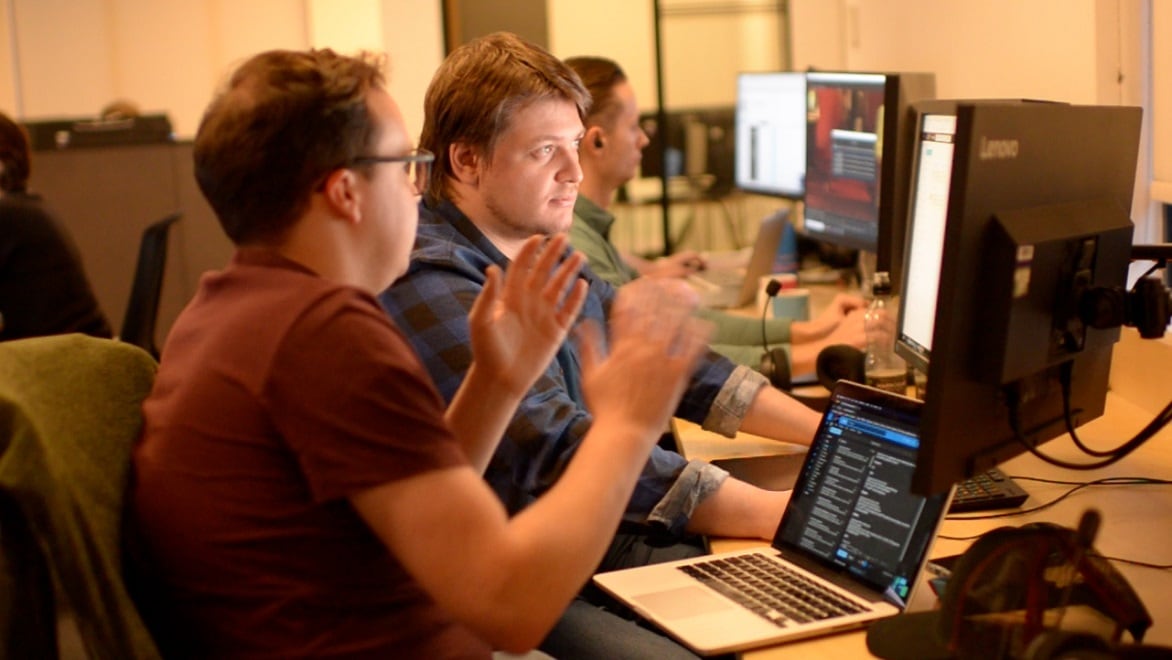
Jellyfish uses cloud-based technologies to engage remote global employees in a work experience that's nearly identical to the one used by the team at London headquarters. Image courtesy of Jellyfish Pictures.
Preparing for accelerating change
It’s been a tumultuous time for British businesses in all industries that have multinational clientele. Brexit, COVID, and digital transformation have pushed many companies to change how they operate and even to whom they sell. But for a forward-thinking few, disruption has been the catalyst for recalibration and growth.
In the media and entertainment industry, the past few years have been a proving ground for London’s Jellyfish Pictures, because of the operational changes the studio made well before chaos landed—a preemptive digital future-proofing that readied the firm for uncertainty. Jellyfish delivers visual effects and animation for some of the biggest names in Hollywood, including Star Wars: The Last Jedi for Lucasfilm/Disney, Stranger Things for Netflix, and Watchmen for HBO. Over 20-plus years, it’s garnered loads of industry praise for creative innovation and a trophy case full of BAFTAs and Emmys.
Almost from day one, embracing the latest technologies and applying them effectively have been fundamental to Jellyfish’s business model. The strategic decision to become an early adopter of cloud technology has proven to be among the most beneficial to the studio’s business, helping teams collaborate efficiently and increasing sustainability.
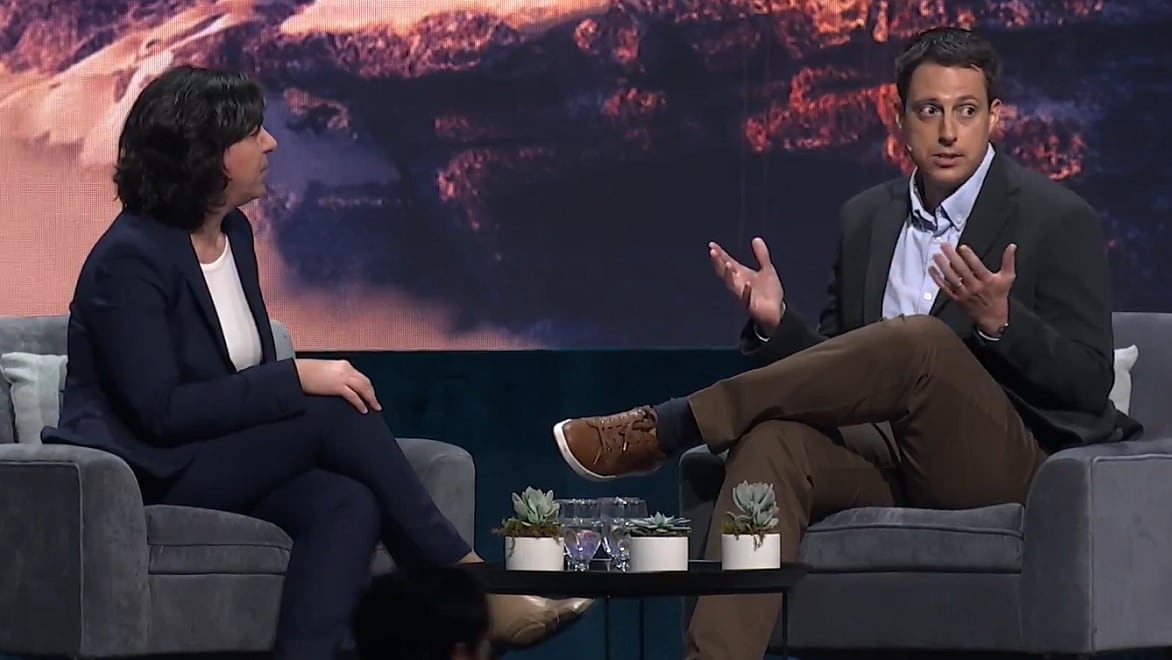
Jeremy Smith (right) discusses Jellyfish Pictures' digital transformation journey with Autodesk VP Diana Colella onstage at Autodesk University 2022.
Creatives assemble in a VFX studio in the cloud
“It all began ten years ago, before the media and entertainment industry started to really shift to cloud-based technology,” says Jellyfish’s chief technology officer, Jeremy Smith. “Even then, circumstances were forcing us to think about things differently.
“Our first studio was in the heart of London. But London is an expensive city and it’s almost impossible to get a big enough facility, so we moved into multiple buildings. From an infrastructure perspective you had to replicate your entire technology deployment almost once per site.”
It was already a costly way to operate, then Brexit hit. “Half of our workforce was from other European countries, and they didn’t know if they could stay in the UK or not,” Smith says. “COVID was another accelerant. Together, they reinforced longer-term plans; we had to have a largely remote workforce and more regional offices. So we decided to rethink the way we work.”
Instead of asking its artists to come to the studio, Jellyfish brought the studio to the artists. Everyone would keep working under the same roof—but a virtual one. “We’ve been able to attract a lot of people because of our technology infrastructure, which allows us to hire people around the globe,” Smith says. “Media companies need to look at a distributed workforce because there aren’t enough people to make the amount of content that’s being commissioned today.”
Extending its earlier moves to the cloud, Jellyfish digitized its entire creative workflow using tools like Autodesk Maya, MotionBuilder, Mudbox, and ShotGrid. “For us it means being able to recruit talent anywhere and provide them with the flexibility to work in a remote or hybrid setting—whatever makes them more productive and helps them balance their professional and personal lives.”
“We’ve been able to attract a lot of people because of our technology infrastructure, which allows us to hire people around the globe.”
—Jeremy Smith, Chief Technology Officer, Jellyfish Pictures
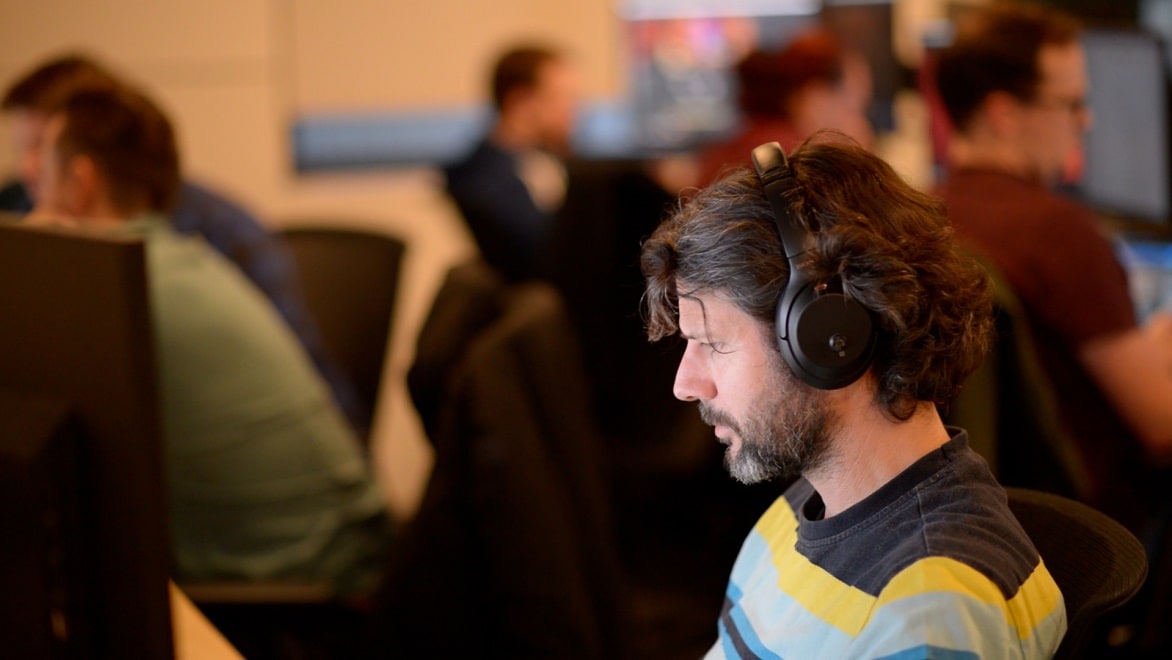
Collaboration and connected workflows, which ensure an effective flow of data between internal teams and other vendors, help the artists of Jellyfish Pictures to stay engaged and creative. Image courtesy of Jellyfish Pictures.
Early adoption pays off
Getting on the path to digital maturity early has put Jellyfish in good company. Digital transformation helps companies adapt to rapidly changing conditions; those, like Jellyfish, that started this process early and are well along the way toward meeting their goals for digital transformation are considered more digitally mature and are proving to be more resilient.
The 2023 State of Design & Make report, a global research study from Autodesk, shows that digitally mature companies—particularly those in the “design and make” category that create spaces, places, objects, and experiences—are investing more in talent-related solutions and hiring from broader geographical areas. For industries that require collaboration in a digital design process to deliver a physical result, it's clear that the future hinges on successfully implementing digitization in their workforces: Nearly 80% of business leaders say that the future of their companies will depend on digital tools.
But for all the hype around digital transformation, its benefits aren’t yet evenly distributed. “The challenge that still persists across our industry is lack of connection between collaborators,” says Smith. “Despite all the progress, the industry often still works in isolation, where vendor A does its own thing and so does vendor B.”
Smith says that lack of common ground makes bringing studios together to work on a project very difficult. “When we work with companies like Netflix, DreamWorks, Disney, and others, we need to be able to share files. But it’s often a tedious and manual process. We have to ingest it into our own workflow and then share it back when it’s done. It’s a trusted way of doing it, but also a legacy process.”
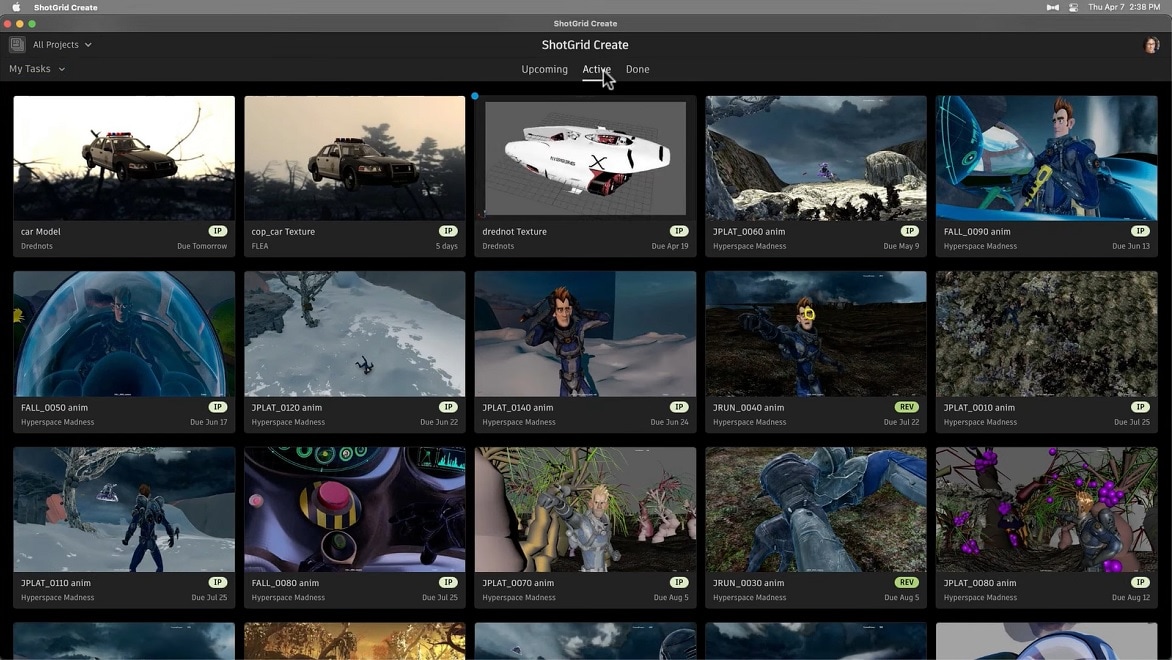
ShotGrid, Autodesk's project management and pipeline tools, helps the Jellyfish team track, schedule, review, collaborate, and manage its digital assets.
Cloud-based superpowers
To get around those kinds of inefficiencies, Jellyfish relies on ShotGrid. The cloud-based production management software and review tools enable the studio’s creatives to bring their visions to life, collaborating as a team on the same files while tracking deadlines and managing budgets.
“It’s such a valuable solution,” says Smith. “It helps you make sure that your whole team is working on the right thing and has the data and information they need to get it done. Because it’s cloud-based and can be accessed in the browser, it is becoming more valuable as a way for people to collaborate. It doesn’t matter if you’re working remotely or in the office, everyone can see the same thing through a single pane of glass.”
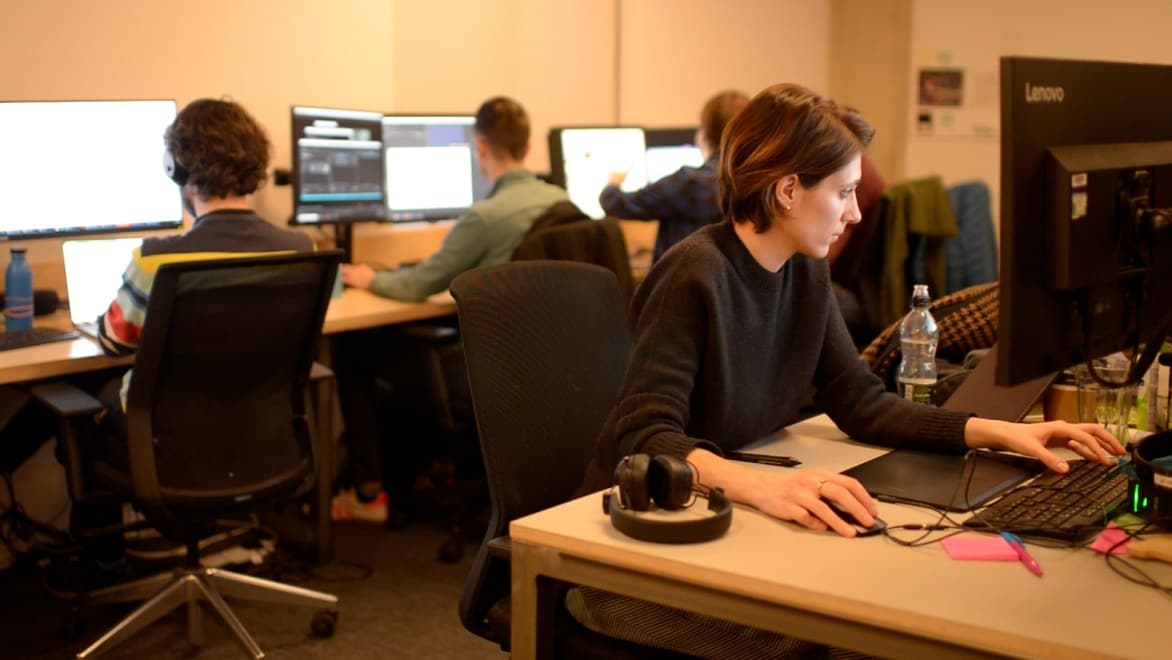
Studios that use cloud-based technology to streamline data delivery between multiple sites and improve collaboration are able to pivot faster when markets change or staffing shortages crop up in certain geographical regions. Image courtesy of Jellyfish Pictures.
The cloud boosts efficiency and sustainability
Another benefit of Jellyfish Pictures’ digital transformation is the ability to work more sustainably. Demand for quality VFX content is growing, meaning greater demand for high-performance computing and the energy it requires. By optimizing workflows and computing cycles, cloud-based technologies from Autodesk and others are helping Jellyfish locate physical hardware in areas that are more optimal for electricity consumption.
The energy savings are good for the planet; the cost savings are good for the business. “We make sure that all of our workflow is as optimized as possible so that we’re not wasting any compute cycles,” Smith says. “We need to do a lot of rendering HPC [high performance computing] workloads, and they are massively expensive to run. It takes a lot of power to run tens of thousands of cores, and it also takes a lot of power to cool them. We’re literally moving those HPC workloads around the globe to locations where power is cheaper. That to me is one of the easiest things you can do to be greener and more sustainable.”
The next step in digital transformation
Jellyfish continues to build on its digital journey—and to work on building bridges. It’s in an excellent position, thanks to its digital maturity, to be a leader in the field. As in so many industries, collaboration has become more accessible through technology, but there are still challenges along the way. “It’s really about getting everyone out of their siloes,” says Smith. “Let’s say you’re an IP holder and I’m a designer at Jellyfish, and I want to make a 3D model. Ideally, we want to be able to collaborate on the same asset, using the same shared storage.”
Standardization is a critical element to overcoming these hurdles, in Smith’s view. The industry is migrating toward Universal Scene Description (USD), an open-source 3D scene description and file format for content creation and interchange among tools. “I believe the main priorities for the media and entertainment industry going forward are the standardization of tools and file formats and things like naming conventions—and the move away from proprietary data formats,” Smith says.
“Going forward, I want us to contribute back to the industry and work collaboratively with people like Autodesk and others to evolve the tools that we use. All these industries have the same problem, and a lot of them can be solved by the same building blocks. It’s just how you put them together.”
2023 State of Design & Make
Find out what’s driving change in architecture, engineering, construction, product design, manufacturing, games, and filmmaking in this new global research report from Autodesk.